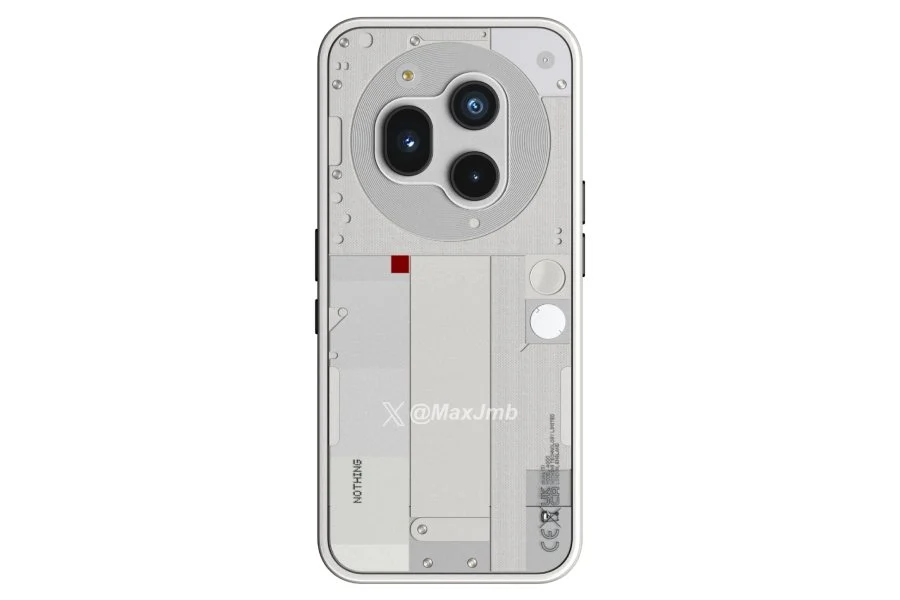The flagship 2022 SoC scene is shaping to be more diverse than ever before
With Samsung finally opening the lid of Exynos 2200, the company has finally lifted its lid. Exynos 2200 We now have the complete overview of how next-gen mobile processors are stacked against each other. Samsung’s flagship chip is joined by Qualcomm’s Snapdragon 8 Gen 1 and Mediatek’s Dimensity 9000 as the top-of-the-line chipsets to power top-of-the-line smartphone launches through 2022.
However, Samsung has only released only a few specifications for the Exynos 2200 model for the moment. Further details will likely be released as we near the release of the Galaxy S22 flagship series and we’ll update this article when we know more. In the meantime, let’s take a look at an actual Snapdragon 8 Generation 1 against Exynos 2200 and Dimensity 9000.
Snapdragon 8 Gen 1 VS Exynos 2200 vs Dimensity 9000 Specs
| CPU | Qualcomm Snapdragon 8 Gen 1 | SAMSUNG xynos 2200 | Dimensity 9000 |
| CPU | 1x Cortex-X2 @ 3GHz 3x Cortex-A710 @ 2.5GHz 4x Cortex-A510 @ 1.8GHz | 1x Cortex-X2 3x Cortex-A710 4x Cortex-A510 | 1x Cortex-X2 @ 3.05GHz 3x Cortex-A710 @ 2.85GHz 4x Cortex-A510 @ 1.8GHz |
| GPU | Adreno | Xclipse 920 AMD RDNA2 cores | Arm Mali-G710 MC10 |
| Display | 144Hz at QHD+ 60Hz at 4K | 144Hz at QHD+ 120Hz at 4K | 180Hz at FHD+ |
| Machine learning | Hexagon | Dual-core NPU + DSP | APU 5.0 six cores |
| Modem | 10Gbps download (mmWave) Sub-6GHz speed unknown 3GPP Release 16 5G | 7.35Gbps download (mmWave) 5.1Gbps download (sub-6GHz) 3GPP Release 16 5G | 7Gbps download (sub6GHz) 3GPP Release 16 5G |
| Camera | 200MP single 64MP+36MP dual 36MP+36MP+36MP triple 8K/30fps HDR recording | 200MP single 64MP+36MP dual 8K/30fps, 4K/120fps, 4K HDR recording | 320MP single 32MP+32MP+32MP triple 8K/24fps recording 4K HDR Video |
| Video playback | 8K H.264, H.265, VP9 decode | 8K AV1, H.264, H.265, VP9 decode | 8K AV1, H.264, H.265, VP9 decode |
| RAM | LPDDR5 | LPDDR5 | LPDDR5X |
| Connectivity | Bluetooth 5.2 Wi-Fi 6E | Bluetooth 5.3 Wi-Fi 6E | |
| Process | 4nm Samsung | 4nm Samsung | 4nm TSMC |
The table of specs above provides a clear overview of the main distinctions between these three chipsets. However, let’s get into some additional details.
Next-Gen CPU and GPU Performance
You’ve probably stopped now at this point, each of the three new mobile processors coming to us is equipped with Arm’s most recent off-the-shelf CPU cores that are based in the Armv9 architecture. In particular, they’re the massive Arm Cortex-X2 as well as the Cortex-A710 mid-level, which is the powerful Cortex-A510. The only exception from the recent announcements of chipsets is the Google Tensor, which is based on the earlier-released Cortex-X2.
Gen Cortex-X1, A78, and A55 are cores based upon the Armv8 architecture in a prototype 2+2+4 configuration.
Based on the fact that the latest Snapdragon, Exynos, and Dimensity all have the same CPU cores, and the same 1+3+4, we’re expecting the same level of performance. There may be a few benchmark percentage points differing between the three due to their clock speeds and cache variations, specifically because Mediatek utilizes the more powerful TSMC 4nm manufacturing process, rather than Samsung 4nm. However, the experience itself is likely to be nearly identical across all three except for any obvious issue with overheating or throttles and, naturally. It’s important to note that Mediatek offers slightly faster LPDDR5X RAM than its rivals but it’s dependent on the devices of its partners to utilize this additional power.
Also Read: Elon Musk and SpaceX at the receiving end of massive criticism
The most significant differences are to be seen within the graphic department. Mediatek’s Dimensity 9000 is the most widely known model and is a choice for the arm Mali-G710’s MC10 GPU which promises an increase of 35% in performance over the previous version.
Gen’s Snapdragon gen’s Snapdragon. We’re not sure about Qualcomm’s new Adreno GPU as the company has removed the numbering from its name convention. We do know that it offers 30% faster rendering compared to the predecessor and should result in an extremely competitive race between the two.
“GPU capabilities and features are set to expand more than this year, thanks to Samsung unveiling hardware-backed ray tracing”.
Samsung’s Exynos 2200 may be the most radical shift in mobile graphics in the last generation. Its Xclipse 920 GPU has the AMD RDNA2 architecture which powers both the PlayStation 5 and Xbox Series consoles and the top-quality GPUs for PCs. This is a first for mobile devices, hardware-based ray tracer technology is also integrated into the Exynos 2200 GPU, which is sure to be more powerful as Mediatek’s program support. But, we’ll need games that can benefit from this technology as well.
But, we do not know about the power consumption or performance that RDNA2 can provide in a mobile form dimension. The core count and the clock speeds are significantly lower when compared to console counterparts, and we need to keep our expectations of performance in check because of this. If you’ve been keeping track of the reports, the Xclipse920 is experiencing issues with thermal performance even at its 1.9GHz rate, causing Samsung to reduce it to 1.29GHz. If it’s true, this could hinder its performance and cause the chip to fall further down the rankings of benchmarks than originally hoped.
We should treat the rumors with a grain of salt. This could be the reason Samsung has canceled its initial launch event without warning and has been extremely silent on performance.
Features for the Flagship Phones
While a revolution in gaming would be thrilling, the fundamental smartphone experience also relies on machine learning, imaging, and networking intelligence. For instance, the Exynos 2200 and Snapdragon 8Gen 1 as well as Dimensity 9000, are solid in these areas as well.
In the beginning, they all have high-quality camera systems. They all have high-resolution image sensors, camera support for triple and dual cameras, and video recording in 8K. But Snapdragon 8 Gen 1 Snapdragon 8Gen 1 chip is the only model to support 8K HDR recording, and also has an impressive 240-shot burst mode. However, it’s not a stand-in against the AV1 decoder for video playback.
Each of the three companies boasts improved imaging processing capabilities, linking their AI capabilities more closely to the pipeline for imaging more than ever before. Mediatek claims that this will allow video bokeh, as well as improved noise reduction as well as Qualcomm, increases its burst mode HDR and night-time photography capabilities. Although there are some key distinctions in the chipset’s capabilities, however, the camera components and features in the software that smartphone makers select for their phones will likely be the most significant differences.
AI, as well as imaging, are the main focus of all next-gen SoCs.
In terms of AI performance, The three processors all make impressive claims for this generation as well. Qualcomm has increased the tensor speed by two times in its Hexagon DSP, which will give a significant boost to certain workloads. Samsung claims a similar 2x increase in machine-learning performance over its predecessor. But the Mediatek Dimensity 9000 stands out as the boldest of the bunch. It boasts the ability to perform 4x faster and an energy efficiency increase over its predecessor.
What impact this will have on the impact of these chips on the larger scheme for the entire universe could be a different idea, as so much of the computing power of computers is dependent on the task at hand. The most important thing to remember is that all of these chips are designed to be on the top of their game in terms of AI performance for mobile devices.
Another feature that’s often overlooked that could result in unusual apps for this year’s year, is security. The Snapdragon 8Gen 1 is equipped with the most recent Trust Management Engine compliant with Android Ready SE. Like it, the Exynos 2200 comes with an Integrated Secure Element able to examine the Root of Trust and verify that the data is stored on secure websites. Secure platforms could come to double as driver’s licenses, vehicle keys, licenses, and other ID documents.
Next Gen-Generation Connectivity
Furthermore, you’ll be able to see as well the 5G standard that is accustomed to the 3 chipsets. 3GPP Version 16 5G is currently the standard, and speeds are now exceeding 7Gbps. Qualcomm and Samsung both claim that they are able to achieve 10Gbps download speeds, however, this is a specific strategy for data aggregation to achieve. For instance, Samsung does this while making use of a simultaneous 4G as well as 5G connectivity. This scenario won’t be the case once networks transition to 5G as a standalone service within the next few years.
“Mediatek is the only one that does not have a 5G mmWave primary chip, at present”.
One of the major distinctions of the chipsets is that Mediatek is among the few that offer the 5G-mmWave tech which limits its appeal in the US as well as in other markets.
We’re not entirely sure what the Exynos 2200 will be capable of when it comes to Wi-Fi or Bluetooth. Based on the specifications of the previous generation it’s likely to support the WiFi standard of 6 and Bluetooth 5.2 at a minimum. This is all you need for the top wireless experience, in any case. Both MediaTek and Qualcomm both offer Wi-Fi 6E and the latter also supports Bluetooth 5.3 connection.
Snapdragon 8 Gen 1 VS EXynos 2200 VS Dimensity 9000
In 2022, the most advanced SoC landscape is expected to be more varied than ever before, especially when it comes to Snapdragon 8 Gen 1 vs Exynos 2200, which will make up the forthcoming Galaxy S22 series. There’s plenty to be excited about due to cutting-edge graphics technology, like the Exynos 2200, which is an extremely competitive device made by Mediatek as well as Snapdragon increasing its attention to the image. However, reports from various sources indicate that there are some problems regarding the battery’s life span and speed that should be addressed with this latest technology. We’ll have to keep an eye on it.
Evidence of the capabilities of this technology can be evident from the way smartphones makers utilize the power of these chipsets to create their products. We’ll be watching these chipsets when smartphones designed for consumers are available for purchase in the first quarter of 2022.


